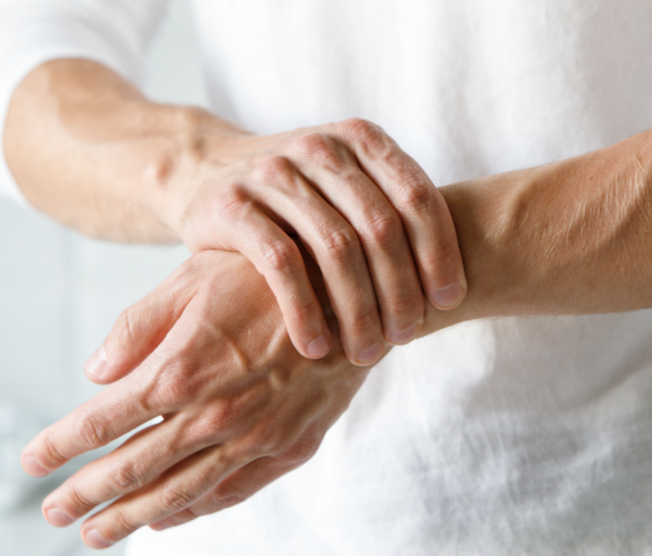 Many older adults with joint pain may have difficulty walking, standing or sitting. This can impact mobility, flexibility, quality of life and increase fall risk.
Many older adults with joint pain may have difficulty walking, standing or sitting. This can impact mobility, flexibility, quality of life and increase fall risk.
You may think joint pain is an unavoidable fact of aging but ignoring it can mask other health concerns that should be addressed. Here’s what you should know.
How Joint Pain Begins
Joints connect the bones in our body, helping them move with ease and supporting our weight. As such, joint tissue is surrounded by cushioning called cartilage that absorbs the impact of everyday actions.
However, decades of physical activity causes a gradual breakdown of cartilage. After some time, this process may spread directly to the joints.
If not addressed, this can lead to osteoarthritis, when exposed bones rub together, causing swelling, stiffness and pain.
Decreased muscle mass in older adults can also speed up degeneration, as the joints have to absorb more impact. To reduce joint breakdown and pain, consider the following factors.
Low-Impact Exercise
Low-impact exercises like yoga, swimming and aerobics get your joints moving without placing extra strain on the cartilage. To further reduce injury risk, stretch ahead of time.
Posture
Although posture is often associated with our back and shoulders, it has an effect on all joints. Improved posture starts with your abdomen. A strong core makes it easier to maintain proper posture, reducing stress on your spinal and cervical joints.
Weight Control
Extra pounds can place significant strain on your joints, particularly the spine, knees and hips. A healthy diet and weight management can lessen the pressure placed on these joints, improve mobility and allow you to engage in physical activity for longer periods of time.
Healthy Diet
Dietary changes should focus on reducing inflammation and supporting joint health. While you may decide to take a supplement, also review the foods you eat:
- Salmon, nuts, coconut oil and avocado have Omega-3s and Vitamin D for joint health.
- Foods high in Vitamin C can help control inflammation.
- Turmeric, artichokes, cranberries, blueberries and soy also reduce inflammation.
- Your body’s cartilage has a high water content, so hydration is key to joint health.
Physical Therapy
A lack of mobility from pain or degeneration can impede progress. Physical therapy can get these joints moving, without additional stress or accelerating damage. Individuals who gain a greater range of motion may find they’re able to participate in low-impact activities that may have been difficult before.
From short-term rehab to therapeutic recreation, our staff is prepared to address the joint health of senior residents. To learn more about our services, contact us today.

